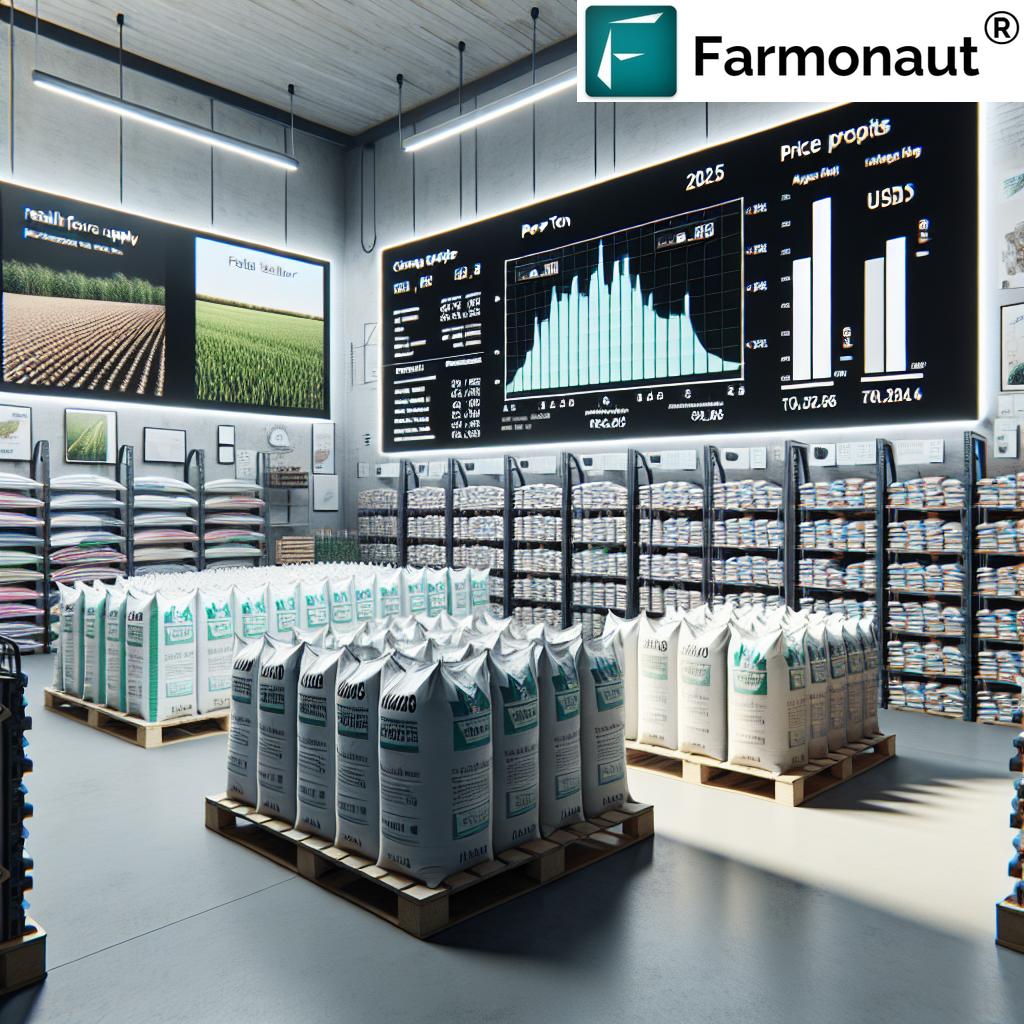Average Cost of Irrigation & Flood Insurance NC 2024: In-Depth Guide for Sustainable Farming & Climate Resilience
“In 2024, average flood insurance premiums for North Carolina farms reached $900 annually, reflecting rising climate risks.”
“Irrigation system installation in North Carolina averages $2,500 per acre, supporting sustainable water management for farmers.”
Introduction: Why Average Cost Matters for NC Farmers
Managing water resources and protecting agricultural assets remain critical challenges for farmers, landowners, and forestry operators across North Carolina (NC). As climate variability increases, irrigation systems and insurance policies have become cornerstones of risk management and long-term profitability in agriculture.
This article explores the average cost of an irrigation system, the average cost of flood insurance in NC, as well as the average cost of wind and hail insurance NC. We provide detailed cost breakouts per acre, highlight sustainability strategies, and offer crucial insights that are especially relevant for 2025 and beyond. Our focus is to empower farmers, landowners, and others invested in NC’s rural infrastructure—ensuring better crop yields and financial resilience even as weather patterns become less predictable.
Average Cost of an Irrigation System in North Carolina
Why Irrigation Plays a Vital Role
In NC, irregular rainfall patterns, prolonged droughts, and unpredictable climate events mean irrigation is more vital than ever. Whether for row crops, horticulture, or extensive farming, choosing the right system and understanding the average cost of an irrigation system is essential for optimizing yields and sustaining farmland health.
Cost Drivers for Irrigation Systems
- Type of System: Drip, sprinkler, center pivot (each varies in features and costs)
- Size of Land: Modestly-sized NC farms (10–50 acres) see different pricing than large-scale operations
- Water Source: Well, river, municipal, or surface water source—availability can affect installation costs
- Precision Equipment: Costs climb with advanced monitoring, automation, AI-based controls
- Operational Expenses: Electricity/fuel for pumps, including regular maintenance and labor
Detailed Breakdown of Irrigation System Costs (Per Acre)
| Type of Irrigation System | Average Cost Per Acre (USD) | Best For | Key Features |
|---|---|---|---|
| Drip Irrigation | $2,000–$3,000 | Row crops, horticulture | Highly precise, water-efficient, ideal for drought-prone regions |
| Sprinkler System | $1,200–$2,000 | Larger areas, mixed crops | Flexible coverage, suitable for various soil types |
| Center Pivot | $3,000+ | Extensive farming (>50 acres) | Automated, efficient, covers large circle area |
For the average cost of an irrigation system in North Carolina, most farmers will pay between $1,500 and $3,000 per acre for installation. Drip systems are more expensive but deliver water efficiency; sprinklers serve varied crops at lower cost, and center pivot systems are ideal for maximizing efficiency in NC’s drier regions and larger farms.
Annual Operational Costs
When considering the annual costs for irrigation systems in NC, don’t overlook:
- Energy: Electricity or fuel for pumps may amount to $300–$700 per acre/year depending on system capacity and crop type.
- Maintenance: Regular upkeep, replacement of parts, leak repair ($100–$300 per acre annually).
- Labor: Slightly higher with older or less automated systems.
These costs add to overall expenses but are essential for sustaining crop health and improving long-term profitability.
Tip: For maximizing irrigation efficiency, consider integrating AI-based advisory systems like those provided by Farmonaut. Real-time insights from satellite imagery help monitor field health, soil moisture, and optimize water usage. Explore more about implementing advanced technology for climate-resilient irrigation on our Large Scale Farm Management platform.
Average Cost of Flood Insurance in NC 2024–2025
Why Flood Insurance is Essential for North Carolina
North Carolina’s unique geography exposes farmers, forestry managers, and landowners to high flood risk, especially in coastal and riverine areas. Frequent exposure to hurricanes and tropical storms makes flood coverage a crucial safeguard.
Average Flood Insurance Cost North Carolina 2024–2025
- Premiums: $700–$1,200 per year for typical agricultural and rural properties
-
Key Factors Affecting Cost:
- Flood zone designation (high, moderate, low risk)
- Property elevation and distance from water bodies
- Historical flood patterns & claims
- Size, value, and use of the property
-
High-risk areas (Special Flood Hazard Areas): Tend toward $1,000–$1,200 per year.
Low-risk areas: As low as $450–$700 per year.
The average flood insurance cost North Carolina 2024 will further depend on policy details, including deductible, covered assets, and additional endorsements (such as for equipment or crop loss). For detailed insurance verification, financial institutions increasingly rely on satellite-based assessments. Learn more about how Farmonaut helps with satellite crop insurance verification here.
How to Assess and Lower Your Flood Insurance Premiums
- Use FEMA Flood Maps: Find your flood risk category and plan mitigation.
- Consider Elevation Certificates: Higher elevation can significantly lower your insurance premiums.
- Invest in Water Diversion: Drainage ditches, retention ponds, and natural barriers can reduce risk and annual premiums.
- Document Upgrades: Providing proof of property improvements, including irrigation changes or floodproofed structures, can help reduce costs.
“In 2024, average flood insurance premiums for North Carolina farms reached $900 annually, reflecting rising climate risks.”
Average Cost of Wind and Hail Insurance NC (2024–2025)
Understanding the Risks: Wind, Hail, and Severe Weather
Wind and hail events remain significant threats to property, crops, and timberland assets in North Carolina, especially during hurricane season and summer storms.
Average Cost of Wind and Hail Insurance NC
- Agricultural Properties: $150–$400 per acre annually for most crops
- Forestry/Tiberland: $100–$300 per acre annually depending on timber value and historical weather risk
- Bundling: Coverage is often included in multi-peril crop insurance, potentially lowering costs and streamlining claims
These insurance premiums are calculated based on factors like:
- Crop type (corn, soy, tobacco, etc.) or timber value
- Farm location and historical hail/wind events
- Insurance provider policies and deductible choices
- Property improvements and risk mitigation
Tip: Comprehensive wind and hail insurance coverage is a crucial part of future-proofing your operation. Maximizing long-term asset protection ensures your farming or forestry operation remains profitable—even amid unpredictable weather patterns.
Comprehensive Comparison Table: Irrigation & Insurance Costs in NC 2024–2025
The following table compares estimated average costs by farm size, highlighting average cost of irrigation systems, average cost of flood insurance in NC, average cost of wind and hail insurance NC, and sustainability notes for better resource management and climate risk mitigation.
| Farm Size | Average Irrigation Cost (USD/year) |
Flood Insurance (USD/year) |
Wind Insurance (USD/year) |
Hail Insurance (USD/year) |
Sustainability Notes |
|---|---|---|---|---|---|
| Small Farm (<50 acres) |
$1,500–$3,000 per acre |
$700–$1,200 | $150–$300 | $150–$400 | Precision irrigation, efficient resource use; technologically aided flood, wind, and hail protection for higher climate resilience. |
| Medium Farm (50–200 acres) |
$1,200–$2,800 per acre |
$800–$1,100 | $130–$280 | $130–$350 | Automated systems for water and environmental management, climate insurance bundling increases resilience. |
| Large Farm (200+ acres) |
$1,000–$2,500 per acre |
$1,000–$1,200+ | $100–$250 | $100–$250 | Fully automated irrigation, precision oversight, bulk premiums, and environmental impact tracking maximize sustainability. |
“Irrigation system installation in North Carolina averages $2,500 per acre, supporting sustainable water management for farmers.”
Integrating Irrigation and Insurance: Best Practices for 2025 in North Carolina
As we look ahead to 2025 and beyond, integrating sustainable irrigation systems with comprehensive flood, wind, and hail insurance is both smart and necessary for climate-resilient farming. Here’s how you can create synergy:
Strategic Steps for Farmers and Landowners
-
Conduct Water and Risk Assessments:
- Utilize satellite-based crop monitoring to spot drought stress and flood-prone areas.
- Farmonaut’s traceability solution offers transparency in agricultural input and resource movement, valuable for insurance documentation.
-
Choose the Right Irrigation System:
- Drip for precision, center pivot for scale—choose based on farm size and climate risk.
- Modern systems can reduce water usage, which in turn could help lower insurance premiums by demonstrating risk mitigation.
-
Bundle Insurance Coverage:
- Combine flood, wind, and hail insurance for comprehensive protection and potential cost savings.
- Yearly policy reviews are crucial as climate conditions evolve.
-
Leverage Technology and Data:
- Use Farmonaut’s API for integrating satellite-derived data into your insurance and farm management processes.
- Access real-time updates on NDVI crop health, soil moisture, and environmental changes—crucial for immediate response to weather threats.
-
Adopt Sustainable Practices:
- Maintain detailed records for crop, equipment, and infrastructure maintenance—helpful in insurance claims.
- Implement carbon footprint tracking for compliance and possible premium reductions (many insurers now incentivize eco-friendly practices).
Practical Example: Bundling Irrigation Upgrades with Insurance
When you install a water-efficient irrigation system, let your insurance provider know: it reduces the risk of drought-induced losses and can lead to discounted premiums. Demonstrating climate-smart agriculture with reliable records (including satellite reports from Farmonaut) provides further leverage in premium negotiations.
Smart Sustainability: Satellite Solutions & API Integration
Farmonaut offers fleet management solutions, allowing you to monitor equipment logistics, reduce operational costs, and increase efficiency—further supporting sustainable resource use and boosting your insurance readiness.
Farmonaut: Satellite Technology for Agricultural Sustainability
At Farmonaut, we are committed to empowering North Carolina farmers, forestry managers, and rural landowners with the latest in satellite-based technology. Our real-time monitoring, AI-driven advisory, and API solutions help users reduce costs, optimize resource management, and boost climate resilience.
- Satellite-Based Remote Sensing: Monitor field conditions, prevent crop stress, and ensure healthy yields with NDVI and soil moisture analytics.
- AI-Powered Jeevn Advisory: Access customized, real-time advice for mitigating drought, floods, and increasing profitability.
- Carbon Footprint Tracking: Prove environmental efforts, improve compliance, and potentially earn premium discounts.
- Blockchain Traceability: Our traceability platform enhances supply chain authenticity, builds trust, and helps verify resource allocation for insurance claims.
- Loans & Insurance Verification: Our satellite-backed reporting helps banks and insurers validate property conditions and reduce risks. See our Crop Loan & Insurance solutions.
- All-in-one Farm Management App: Access via web, Android, or iOS for seamless operation and data-driven decisions.
Frequently Asked Questions (FAQ)
1. What is the average cost of an irrigation system in North Carolina?
The average cost of installing an irrigation system in NC is $1,500–$3,000 per acre, varying by system type (drip, sprinkler, or center pivot) and land size. Operational costs (energy, maintenance) average an additional $400–$1,000 annually per acre.
2. What does flood insurance typically cover for North Carolina farms?
Flood insurance for agricultural properties covers structural damage, loss of farm equipment, and sometimes related crop losses caused by flooding. Premiums depend on flood zone classification and historical flood patterns.
3. How are wind and hail insurance premiums calculated for agricultural properties in NC?
They are typically priced based on crop or timber value, historical weather risk, location, and deductible selected. Average cost is $150–$400 per acre for crops; $100–$300 per acre for timberland.
4. How can I reduce my insurance premiums for 2025 and beyond?
Adopt advanced irrigation, improve drainage, invest in sustainable practices (like carbon tracking), and document all upgrades through technology. Providing proof of risk mitigation to your insurer often leads to discounts.
5. Can satellite technology really help in risk management?
Yes! Satellite-based crop health monitoring, flood zone mapping, and resource traceability enable smarter decisions, rapid response to risks, and better compliance with insurance and environmental standards.
Conclusion: Making Informed Decisions for 2025 NC Agriculture
The average cost of an irrigation system and average cost of flood insurance in NC are central topics for every North Carolina farmer, forester, and rural landowner in 2025. With irrigation installation averaging $1,500–$3,000 per acre and flood insurance premiums from $700–$1,200 annually, these investments are not optional—they are essential for managing resources and protecting assets amid intensifying climate threats.
Add to that the average cost for wind and hail insurance (NC: $150–$400 per acre). When combined with smart, data-driven resource management—enabled by Farmonaut’s advanced satellite and AI solutions—these strategies create a robust, sustainable roadmap for agricultural resilience.
For more information, integration, or to explore our management applications and developer APIs, visit us online. We are here to support your transition to climate-smart, sustainable agriculture and bring North Carolina’s farming future into the new era.
Average cost of an irrigation system, average cost of flood insurance in NC, and average cost of wind and hail insurance NC are crucial decision factors for North Carolina’s agricultural future. Don’t leave your land and livelihood unprotected—plan, insure, and monitor for a secure and sustainable tomorrow.














